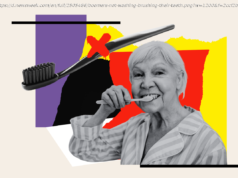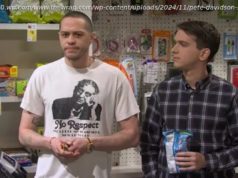Kathy Zhang, a newsroom and product analytics manager at The Times, discusses how analytics tools help her better serve readers.
How do New York Times journalists use technology in their jobs and in their personal lives? Kathy Zhang, a newsroom and product analytics manager, discussed the tech she’s using.
Your team helps Times reporters analyze data about stories and readers. What kind of tech do you use to do that, and what information do you review?
The Times uses a few different technologies to measure readership and behavior within our website and apps. The primary tool we use is an internal analytics system that powers the bulk of our analysis and dashboards. This system also underpins a newsroom tool called Stela, which provides story- and department-level analytics snapshots.
We also use tools like Chartbeat and Google Analytics for the same purposes, because they have user interfaces that non-analysts can also use to inform their work. Editors use Chartbeat to understand real-time readership of our stories and Google Analytics to pull trends and reports over a longer period of time.
What do you like about the tools, and what could be better?
All of these tools hold essentially the same information, so it really comes down to personal preference and familiarity with the data and functions. Some of these tools may be better to use, depending on the questions I’m trying to answer.
I run Google Analytics training sessions for the newsroom, and something I try to make clear is that learning how to use the tool — in terms of which buttons to click and which settings to modify — is going to get us only so far. Understanding the underlying data and which pieces of it will answer your question will always be more important. Simply figuring out the number of pageviews any story received is easy. Trying to place that metric in context of what we might expect for that story is more difficult, because many factors play into the pageviews and reach of what any one story achieves.
We need to consider the promotion strategy behind the story. Did we give the story prominent placement on the home screen? Did our social media team post it to Facebook? Did we share it in any newsletters? We also need to consider the kind of story it is. Is it breaking news? Is it an investigative story? Is it a movie review? The timeliness of the story is another consideration. Is the story pegged to a news event where we would expect nearly all of the traffic to come in on the first day? Or is it a story we would expect more of a long tail for because it’s service journalism or a piece that would sustain steady search traffic?
The tools we use all have their pros and cons. As frustrated as I sometimes get navigating suboptimal user interfaces, they’re all solid tools for the work we do and serve different (although often overlapping) purposes.
Do analytics help the Times better serve readers, or do they just make us obsessed with pageviews?
Several of the masthead editors like to say that The Times strives to be data informed rather than data driven, which I think is an important distinction. We don’t let pageviews dictate our coverage or approach, but we do use data to understand reader engagement and the reach of our stories. Our reporters’ and editors’ news judgment remains the driving force behind the decisions we make for story promotion and distribution. If the story is important, we get it out in front of our readers through prominent home screen placement, push alerts, social media posts and more.
But analytics allow us to serve our audience better. Seeing our online readership shift from a predominantly desktop audience to a much larger smartphone audience underscored the need for our product and technology teams to prioritize mobile-first story forms. Looking at page speed allows us to prioritize making our pages load faster so people don’t need to wait to read our stories.
Editors are some of our best analytics consumers. They constantly monitor our dashboards to make real-time judgments about how best to engage our readers. News desk editors modify headlines and packaging to draw attention to stories. Search specialists take advantage of trending search terms to expose our stories to a wider audience. Social media editors follow the conversation and find the best moments to showcase our journalism. Analytics are crucial to the full life cycle of our coverage.
Though many lament that access to analytics can make a publication hyper-focused on pageview volume to the detriment of reader engagement, at The Times we’re cognizant of those pitfalls, and we structure our analyses to avoid them. The close partnership our newsroom editors have with the analytics team makes both our editors and our analysts think smarter about what our data tells us and how we can best deliver our journalism.
Outside of work, what tech product are you using a lot?
I was very late to the e-reader wave, but I purchased a Kindle at the beginning of the year and I absolutely love it. After a bit of research, I settled on the Paperwhite and find it incredibly convenient. I can use it one-handed, so it’s easier to read on the train than a physical book. It’s small enough to fit in my coat pocket, so I can get a bit of reading in when I’m standing in line at the grocery store.
One of the best things about the Kindle and e-readers in general is their integration with public libraries. Nearly all libraries give their patrons the ability to borrow e-books through an app like Overdrive, Libby or Hoopla. Before I bought my Kindle, I would borrow books from the New York Public Library’s digital library to read on my phone. It’s even better with a dedicated e-reader, because the screen is easier on my eyes and I don’t have other apps to distract me.
I credit the Kindle for getting me to read more than I used to. For pre-Kindle me, selecting the next book seemed like such a commitment. If I chose something heavy and serious but I wasn’t in the mood for it, I would carry the book around in my bag for weeks, avoiding it like an email from an ex I had assured we’d stay friends. But now I can carry several books at once and choose something lighthearted or somber or anywhere in between.






